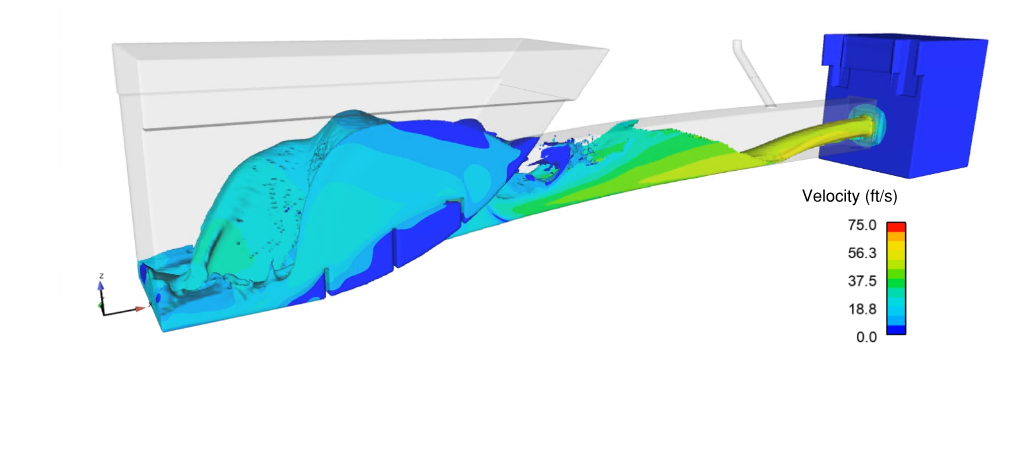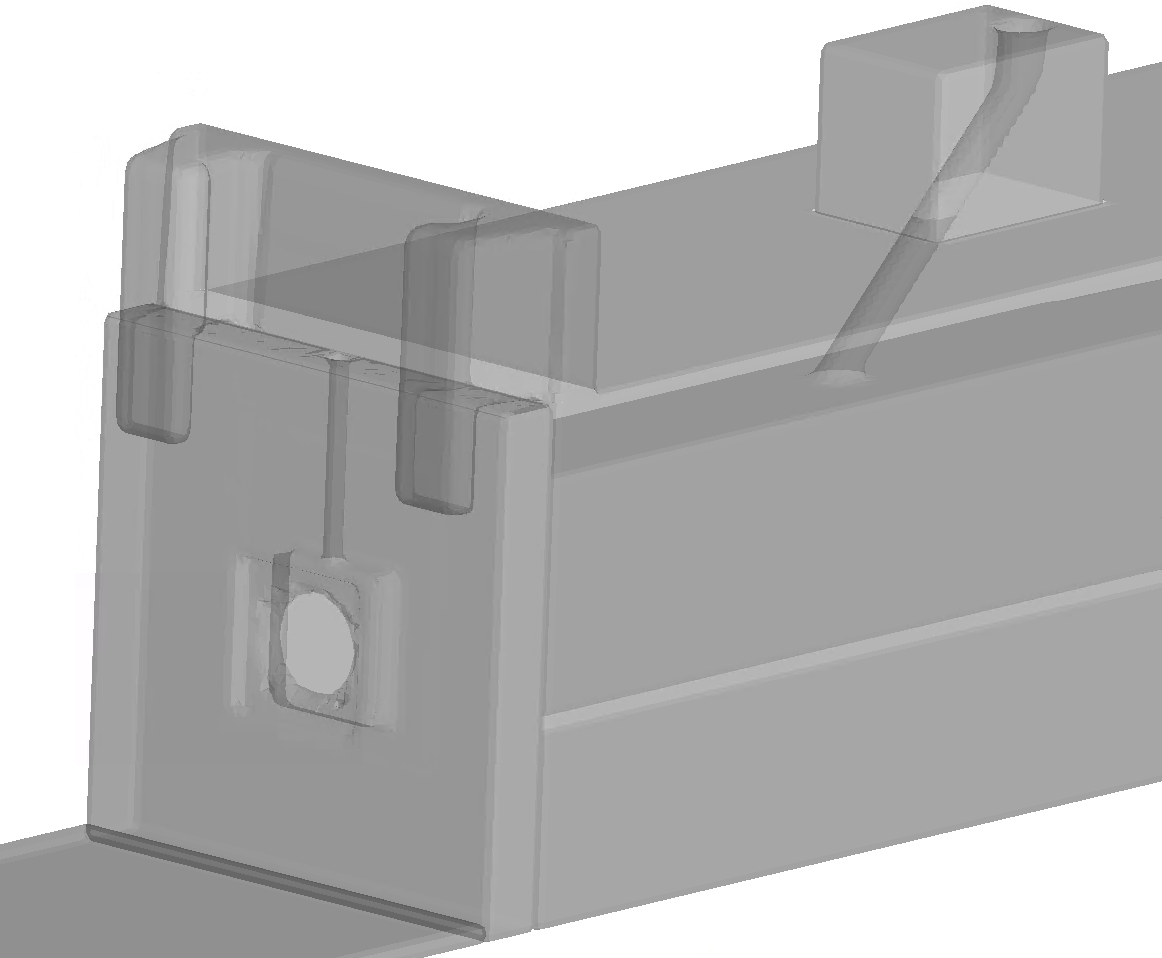Hoover Dam Jet Flow Gate Analysis


Steel-Fab, Inc. (Steel-Fab) required hydraulic engineering support to complete a three-dimensional (3D) computational fluid dynamics (CFD) hydraulic modeling analysis of a proposed jet gate that was being designed for the City of Columbia, Ohio’s Hoover Dam. The gate would be located at the upstream end of an existing tunnel at the base of the dam. The purpose of the 3D modeling study was to determine if an existing air vent in the tunnel could supply enough air to avoid low pressures from occurring in the tunnel when the gate was open. If the existing vent was adequate, Steel-Fab could avoid having to include a new vent on the jet gate valve assembly.
Kleinschmidt used the 3D CFD software FLOW-3D HYDRO (FLOW-3D) to complete the analysis. The model domain extended from upstream of the jet gate orifice to downstream from the end a new aeration structure located at the downstream end of the 70-foot long tunnel. Kleinschmidt used FLOW-3D to model 1-fluid (e.g., water) and 2-fluid (e.g., water and air) simulations to be able to understand the sensitivity of the results to different types of fluid physics.
Our team evaluated three cases to test air demand requirements within the tunnel: 1-fluid simulation with the existing air vent; 2-fluid simulation with the existing air vent; and 1-fluid simulation with existing and new jet gate vents. Based on the modeling results, Kleinschmidt provided recommendations for the installation and placement of a new air vent to reduce the likelihood of cavitation, reduce potentially problematic whistling sounds within the vents, and provided operational recommendations to minimize or eliminate potentially problematic pressure gradients during gate opening.
Kleinschmidt’s 3D CFD modeling provided Steel-Fab with a level of certainty and confidence that adding a new vent was justified to prevent damage to the gate or tunnel. The complex nature of the water and air flow and interactions necessitated the CFD modeling which provided more detail at a lower cost than physical modeling would have achieved.
